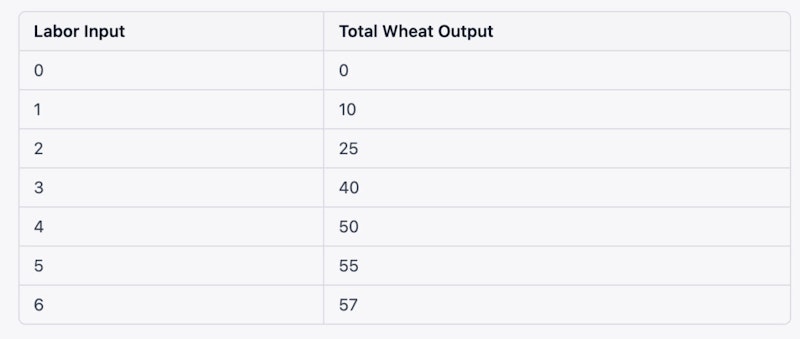Topic Videos
Law of Diminishing Returns, Marginal Cost and Average Variable Cost
- Level:
- AS, A-Level, IB
- Board:
- AQA, Edexcel, OCR, IB, Eduqas, WJEC
Last updated 10 Mar 2023
In this short revision video we go through the law of diminishing returns and explain the link between declining marginal productivity and rising short run marginal and average variable cost.
Diminishing returns to labour in the short run
As more of a variable factor (e.g. labour) is added to a fixed factor (e.g. capital), a firm will reach a point where it has a disproportionate quantity of labour to capital and so the marginal product of labour will fall, thus raising marginal cost and average variable cost.
The law of diminishing marginal returns states that employing an additional factor of production will eventually cause a relatively smaller increase in output. This occurs only in the short run when at least one factor of production is fixed (e.g. capital) and so increasing a variable factor (e.g. labour) will result in the extra workers getting in each other’s way, reducing productivity. Hence the short run cost curve at first falls as increasing marginal returns are enjoyed (from specialisation and division of labour) but then there comes a point when the increased variable factor results in rising costs because productivity is hampered.
The law of diminishing returns is an economic principle that states that as more and more units of a variable input are added to a fixed input, after a certain point, the marginal product of the variable input will begin to decrease. In other words, the additional output produced by each additional unit of the variable input will start to decrease, ceteris paribus (i.e. with all other factors remaining constant).
To provide a numerical example, let's consider a hypothetical agricultural farm that cultivates wheat. Suppose the farm has a fixed input of land and capital (e.g. machinery, buildings), and the only variable input is labor. The following table shows the total output of wheat (in bushels) as the farm adds more labor inputs:

As we can see, initially, as the farm adds more labor inputs, the total output of wheat increases rapidly. However, after a certain point (in this case, after 4 labor inputs), the total output starts to increase at a diminishing rate. For instance, adding the fifth labor input only increases the total output by 5 bushels (from 50 to 55), whereas adding the fourth labor input increased the output by 10 bushels (from 40 to 50). Moreover, adding the sixth labor input only increases the output by 2 bushels (from 55 to 57).
Thus, this example illustrates the law of diminishing returns in action, whereby the marginal product of labor (i.e. the additional wheat produced by each additional labor input) starts to decline after a certain point, as the fixed input of land and capital become increasingly overburdened by additional labor inputs.
You might also like

Free lunch? What if electricity was free?
26th January 2018
Business Economics - 'Lockdown' activity
Quizzes & Activities
Short Run Marginal & Average Cost Explained
Topic Videos
Key Diagrams - Short Run Shut Down Price
Topic Videos

Energy Price Crisis - Many Small Businesses May Not Survive
14th August 2022

In Economics - what is thinking at the margin?
2nd August 2023
